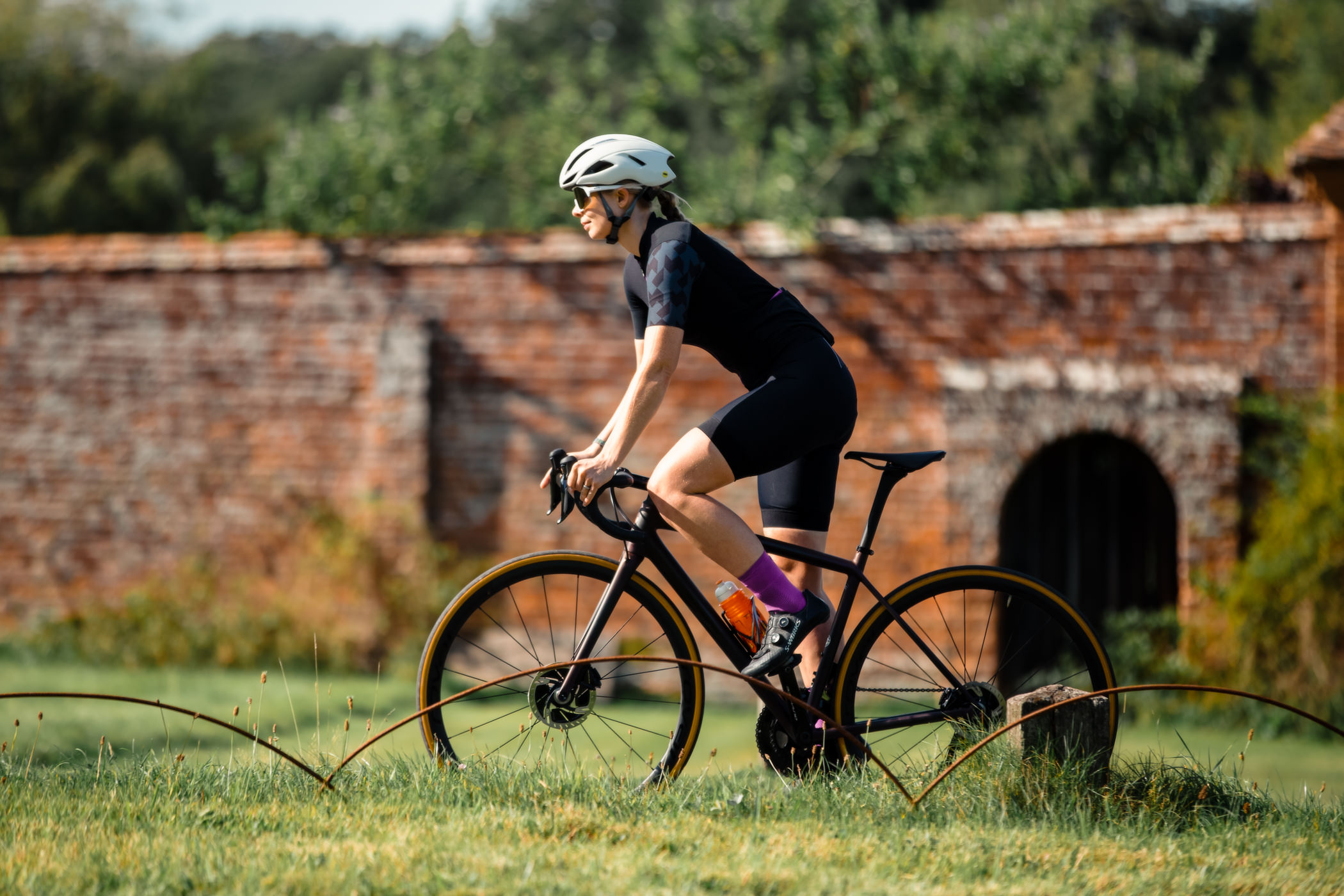Tour de France winning bikes: Pinarello is the top dog
We look back at the last 15 bikes to be ridden to victory and Italian brands dominate

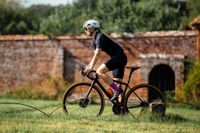
Joe Baker
It goes without saying that the Tour de France is the biggest race in cycling, which means it's the perfect proving ground for brands to test their range-topping superbikes, with many companies timing new releases with the Tour each year.
The bike brands are fighting nearly as hard for the top step of the podium as the riders and teams themselves - so which brands have come out on top over the years?
Well, the last decade has been an almost totally Italian affair. Eight of the last ten editions have been shared between Pinarello (Team Ineos) and Colnago (UAE Emirates), with the only upsets coming from Specialized (Astana in 2014) and Cervélo (Jumbo-Visma in 2022).
Looking back a little further and 2011 saw the first ever Australian victor of the Tour de France in Cadel Evans (Team BMC), who rode a BMC Team Machine. Before that Specialized also secured a bike win in 2010 with Andy Schleck (Team Saxo Bank).
Schleck was awarded the title after though only after Alberto Contador's disqualification. That didn't actually change the winning bike brand as Contador's Team Astana were also on Specialized.
El Pistolero did win the year before, though, but in 2009 he was on board a Trek Madone. The year before that, and rather neatly topping and tailing our ever-so-slightly arbitrary 15 year timeline, Carlos Sastre won the 2008 race on a Cervélo!
Here's a look at the machines that took their riders to victory from 2008 to 2022 - but first, a few commonly asked questions...
The latest race content, interviews, features, reviews and expert buying guides, direct to your inbox!
What kind of bikes do Tour de France riders use?
The vast majority of stages are road stages, requiring road bikes. In 2022, there are two time trial stages (stage one and stage 20), where riders will be aboard time trial bikes. But you wanted more detail than that, right?! Most brands supply teams with two road models: a lightweight climbing bike, and an aero bike - the latter being more suited to fast, flat stages. Exceptions include Pinarello, where the Italian marquee says its Dogma F can do both.
How much do Tour de France bikes cost?
The Pinarello Dogma is perhaps the best example to give. Relaunched in August 2021 as the 'Pinarello Dogma F', the top-end SRAM Red eTap model will set you back £12,000 / $14,500.
Can you buy a Tour de France bike?
WorldTour bikes ridden by the pros are commercially available. Brands across the board will tell you that the bike you can buy in the shops is exactly the same as that ridden by the pros. However, some skepticism surrounds this assertion. If pro bikes are treated with a slightly different carbon layup and geometry, as is often suggested, the changes will be minimal and likely take into account the lesser requirement of longevity and greater strength/flexibility of professional riders.
Which bike brand has had the most Tour de France wins?
Pinarello hasn't just dominated the past decade or so - bikes bearing the Italian brand's name are the most successful in Tour de France history. The first of its 16 wins came in 1988 with Pedro Delgado and Team Reynolds, with further successes coming with Miguel Induráin, Bjarne Riis and Jan Ulrich and then Team Sky/Ineos Grenadiers. The next most successful brand is Peugeot. Now better know for cars, the French brand first won in 1905, with its last victory in 1977. Trek can only claim two official Tour de France wins, with Alberto Contador in 2007 and 2009. The US brand would be equal with Gitane on nine wins but, of course, Lance Armstrong's seven 'wins' aboard a Trek have been struck from the record books.
Tour de France bikes
2022: Jonas Vingegaard's (Jumbo-Visma) Cervélo R5 and S5
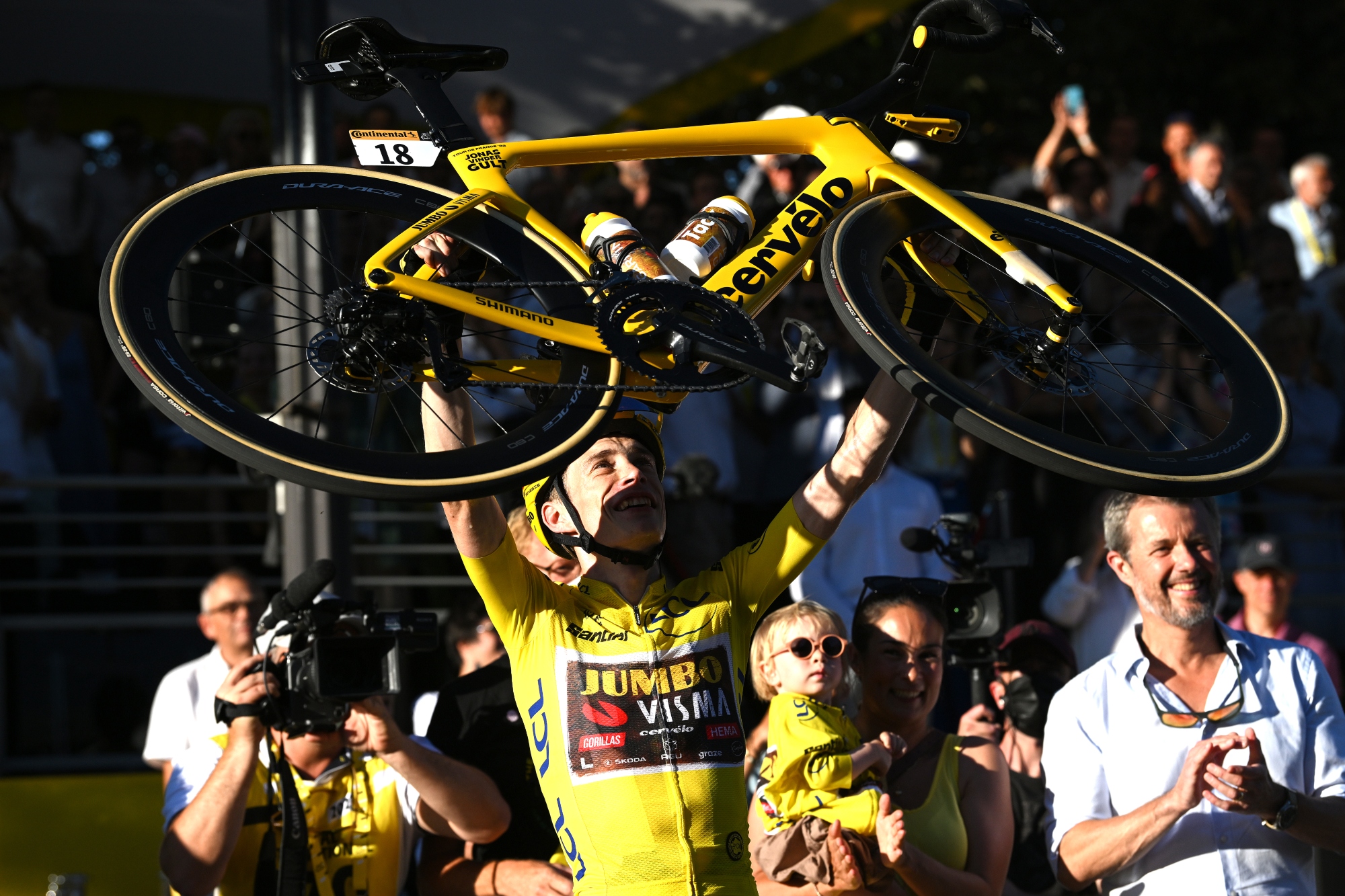
The 2022 Tour de France was a display of dominance from the squad we have seen at the forefront of racing for so long now, Jumbo-Visma. Last year, the team swept up the overall victory and KOM jersey with Jonas Vingegaard, as well as the points classification with Wout Van Aert. Six stage victories to top things off made this a pretty memorable run for the Dutch cycling team.
Vingegaard used a combination of Cervélo's S5 aero bike, and R5 climbing bike throughout the Tour, but he ultimately rolled into Paris aboard his custom-painted S5.
Both bikes were fully clad in the latest 12-speed Shimano Dura-Ace R9200 and featured matching wheels. The Dura-Ace wheelsets varied from the C35 offering for mountain days, while the C60s saw use on the flatter stages.
Interestingly too, 2022 is the first year in history to be won strictly on disc brakes. Though Tadej Pogacar did roll into Paris one year earlier on discs, he also used rim brakes in time trials and for a select few mountain stages - Jumbo-Visma on the other hand, ran exclusively disc setups during the 2022 Tour. If ever there was a sign that rim brakes are on their way to extinction, surely this is it.
2020 & 2021: Tadej Pogačar (UAE Team Emirates) Colnago V3Rs
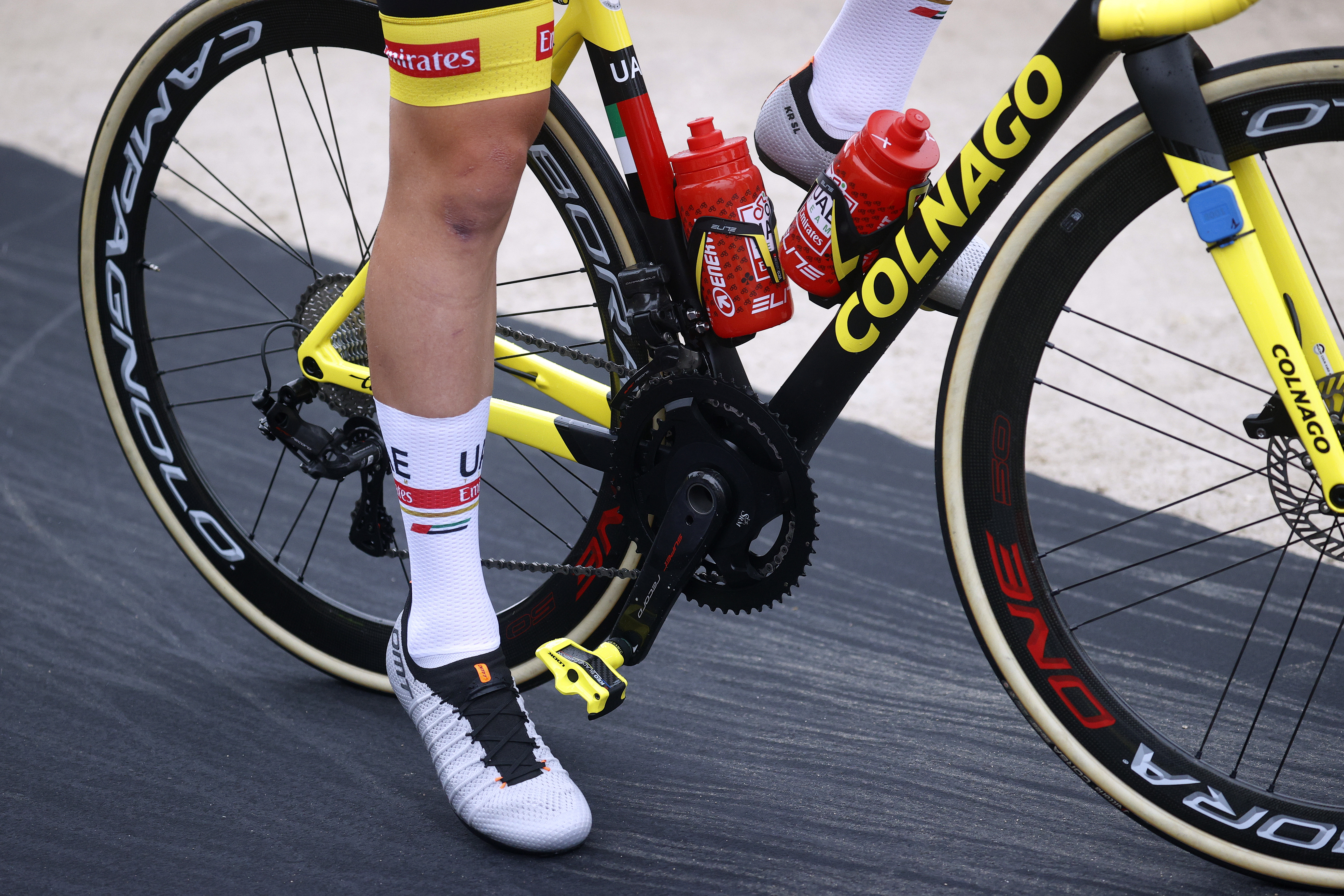
Pogačar's winning machine from stage nine of 2021
Pogačar's 2020 win made him the first ever Slovenian rider to win the Tour de France, the youngest ever rider at 21-years-old, and he achieved that feat riding a Colnago V3Rs, with Colnago having never won cycling's most prestigious race before either.
Though he rode the same bike model each year, his setups differed. In 2020 he opted for a more 'traditional' feel, with a Campagnolo Super Record EPS 12-speed groupset, Bora One tubular wheels and a set of Campagnolo’s Super Record rim brakes.
In 2021, though, he used Campagnolo’s Super Record EPS groupset and Bora Ultra WTO 45 wheels with Vittoria Graphene 2.0 tubeless tyres. He switched to disc brakes too for most stages, helping his stability in the often tumultuous French weather.
For two stages he did revert to rim brakes though, one of which came during his stage five time-trial win while using his Colnago K.one time trial bike. He used the same setup that helped during 2020's decisive La Planche des Belle Filles time trial, before he ditched the TT bike in favour of a road bike.
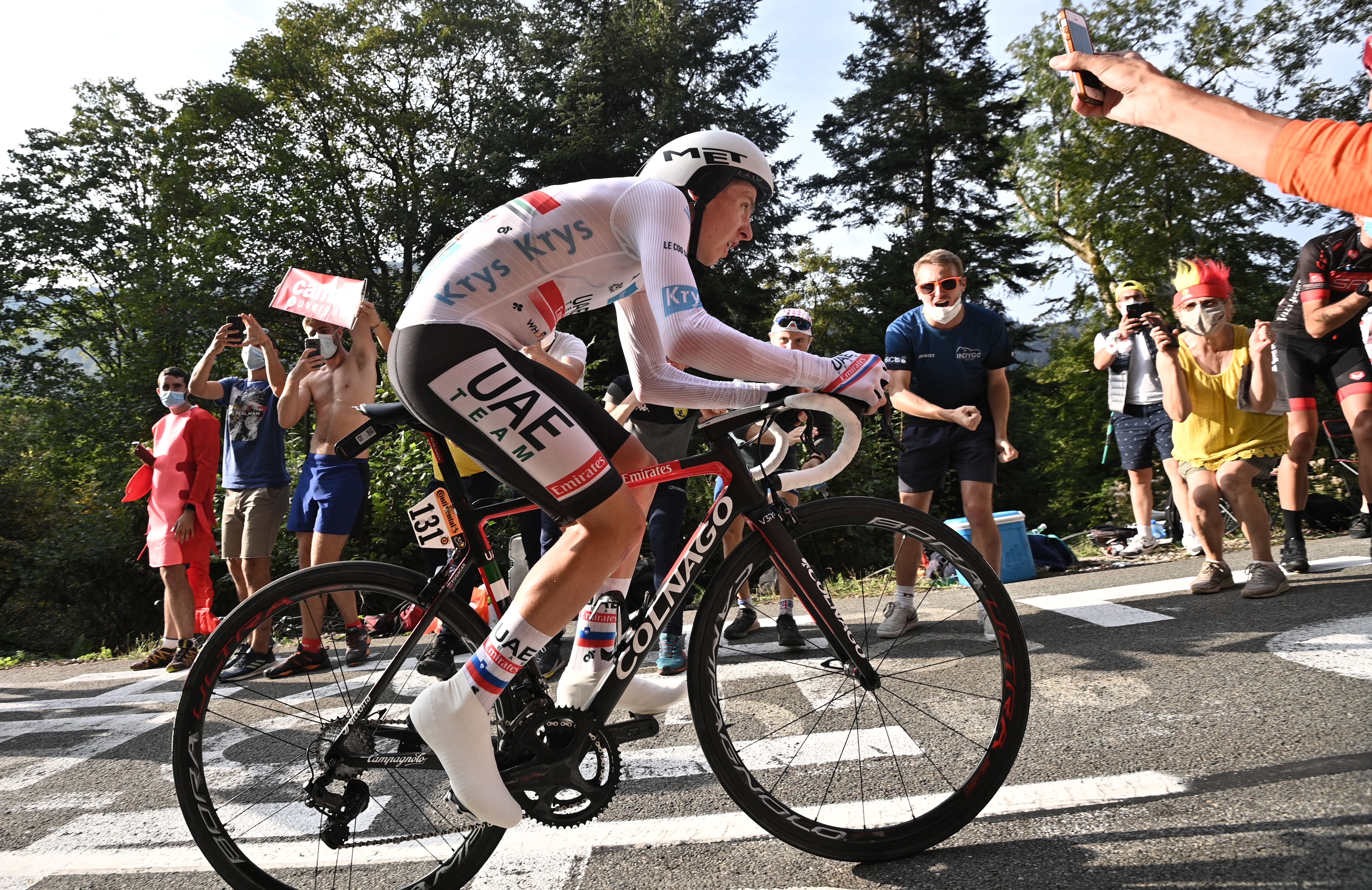
Pogačar's 'traditional' bike without a power meter or computer on stage 19 of the 2020 Tour de France
Pogačar proceeded on a bike without a power meter or computer, riding on feel alone in one of cycling's most pure rides.
In 2021, his bike featured yellow accents as early as stage nine, when he first wore the maillot jaune, so dominant was his performance.
2019: Egan Bernal (Team Ineos) Pinarello Dogma F12
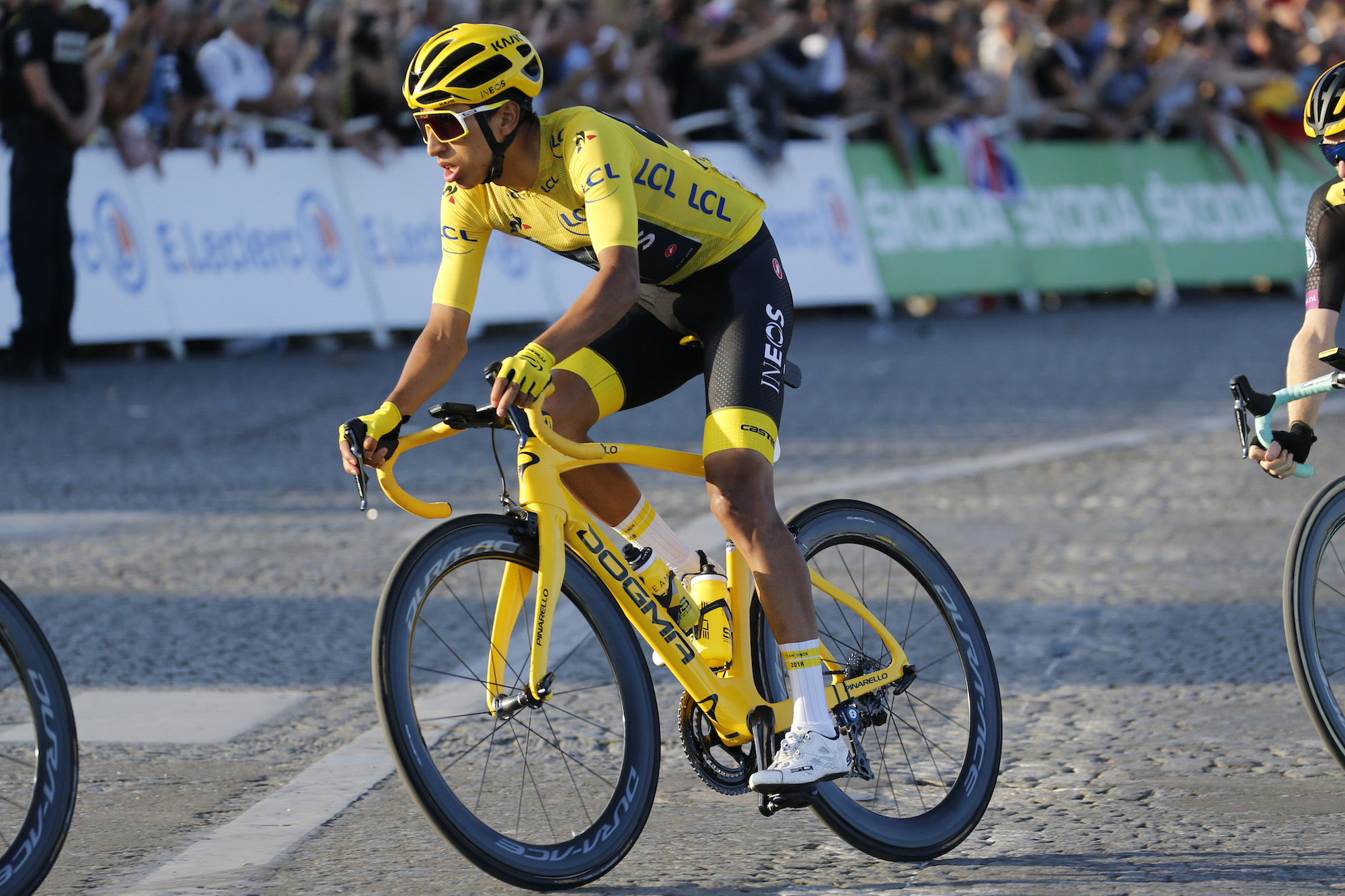
While the team may have undergone a name change and re-brand, there was no shock at the top of the Tour de France standings as Team Sky, now Team Ineos, took another title.
The 2019 Tour was a historic moment, however, as Egan Bernal became the first Colombian to ever win the yellow jersey and the youngest rider - at the time - in the modern era, at 22-years-old.
It took Pinarello another two years to bring out the Dogma F12 after the launch of the Dogma F10, on which Thomas won last year’s Tour de France. In that time, Pinarello said it had improved the aerodynamics, saving eight watts at 40kp/h, and made the frameset stiffer and lighter too.
Bernal stuck with rim brakes in 2019, twinned with Lightweight wheels for the climbing days and Shimano Dura-Ace wheels on the fast and flat days.
The Shimano Dura-Ace R9100 made up the rest of the components.
2018: Geraint Thomas (Team Sky) Pinarello Dogma F10 X-Light
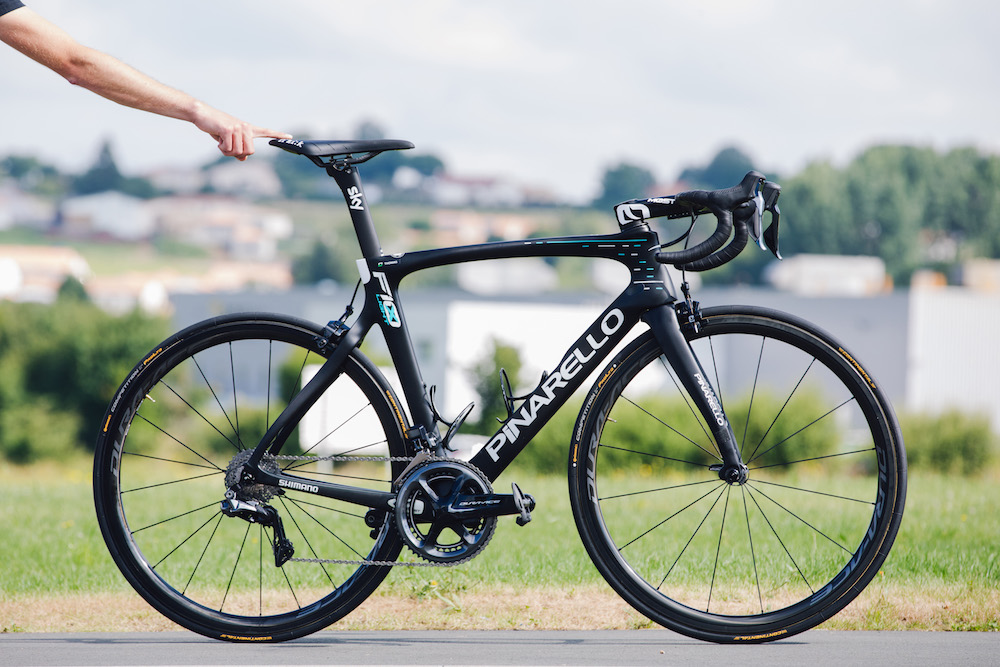
Thomas won the 2018 Tour d France aboard a Pinarello F10 X-Light - which uses a slightly different carbon fibre compared to previous iterations, resulting in a weight drop of around a kilogram.
The geometry remains fixed, as does the use of an asymmetric bottom bracket, plus the wind cheating concave down tube is designed to incorporate bottles in optimal position.
The Tour's first Welsh winner opted for an integrated 40mm Talon handlebar and 130mm stem, with a Fizik Arione saddle that carries his optimum position marked in pen. The saddle height was around 78.5cm and Thomas rode with 175mm cranks - which are longer than most opt for.
The groupset is Shimano Dura-Ace, with a 53/39 crankset and 11-30 at the back, alongside a Stages power meter. The wheels fitted when we saw the bike were carbon tubular Dura-Ace hoops, wearing Continental Competition tyres and the paint job carries a speed line for every Team Sky victory.
Read more and see the bike via video
2017: Chris Froome (Team Sky), Pinarello Dogma F10

Froome's third consecutive Dogma win. By this point, the employees at Pinarello's painting factory in Treviso were probably quite used to applying (apparently) last minute yellow paint jobs before the roll into Paris.
The F10 had some minor tweaks from the F8, but no major overhauls - quite simply, Pinarello and Team Sky felt it was a pretty good bike. Pinarello made the F10 a little bit more aero, a little bit stiffer, and very slightly lighter.
The diet the frame had been on meant that Froome didn't need the X-light model he used when the F8 was in production, so his frame is as per an off-the-peg creation in terms of weight.
When we saw it, Froome had opted for a 53/39 standard set up with an 11-28 cassette, though the chainrings themselves are osymetric - a preference which can help improve pedalling efficiency.
On flatter stages, Froome used deeper wheels, but when we had the chance to video it, the bike was shod with shallow Shimano Dura-Ace C40 wheels and pro-only Continental Competition Pro Ltd tubular tyres.
The bars, stem, and bar tape are all Shimano's own brand, Pro, fitted with a K-Edge out from computer mount and Fizik saddle.
See more: Chris Froome's 2017 Tour de France winning Pinarello Dogma
Like Bradley Wiggins before him, Froome rode the Bolide time trial bike during the ITT stages of the race.
Froome opted for 175mm cranks, used a chain catcher to guard against necessary trauma. The saddle height was 79.6cm - 1mm lower than that 79.7cm on his road bike. There was grip tape on his saddle, which helped him maintain the ideal position and he opted for a 58/48T chainring set up with 11-28 cassette.
In a touch of perfectionism, the 3D printed handlebar was made from titanium and moulded perfectly to fit its rider.
Read more: Chris Froome's Tour de France Pinarello Bolide
2016 & 2015 : Chris Froome (Team Sky) Pinarello Dogma F8
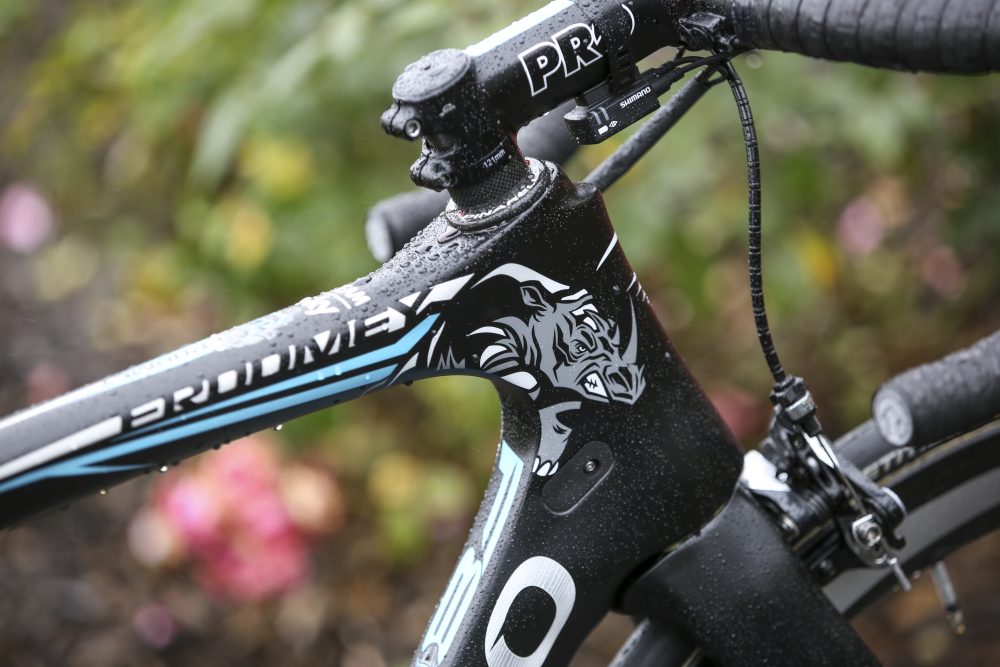
To represent his Kenyan upbringing and passion for wildlife as an ambassador for the charity United for Wildlife, Froome's 2015 and 2016 winning bikes featured unique rhino decals.
The osymetric chainrings are present, with a chainguard to guard against unfortunate chain-drop moments. The rest of the drivetrain was Shimano Dura Ace, with an 11-28 cassette and Stages power meter.
Froome's preference for having two shifting buttons close together meant the satellite shifters were stripped down, also saving him weight in the meantime too.
The wheels we shot the bike with were Shimano's Dura-Ace C50s, bottle cages were 15g Leggero's from Elite and the bars were Pro.
The winning machine was polished off with a 121mm stem, Fizik Antares 00 saddle with carbon rails and Continental Competition Pro Ltd tubular tyres.
See more: Chris Froome's 2016 Tour de France winning Pinarello Dogma F8
2014: Vincenzo Nibali (Astana), Specialized S-Works Tarmac
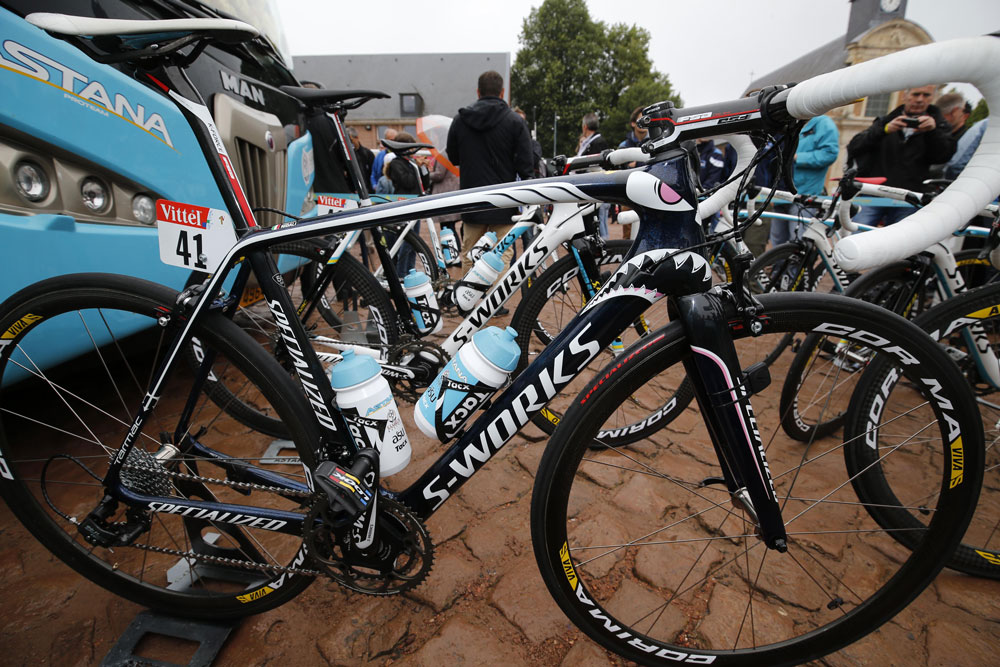
Vincenzo Nibali managed to break up the Pinarello domination in the Tour in the early 2010s, as he rode to victory in 2014 aboard an S-Works Tarmac painted with decals that hark to his nickname - Lo Squalo - or 'the Shark'.
This Tarmac became the first edition to feature a size specific carbon-layup, improving ride quality by better catering for the individual's needs and desires. Nibali added an FSA stem to his machine too, with Corima Viva wheels and a Campagnolo Super Record groupset also included.
Specialized even customised the Italian's bike for the final day, adding yellow stickered wheels from Corima and a custom FSA stem with yellow decals to the already painted yellow frame.
During time trial stages, Nibali rode the brand's slippery Shiv TT bike. He finished fourth on the 54 kilometre stage 20 solo event to comfortably maintain his place on the top step of the podium, finishing seven minutes 52 seconds ahead of second-placed Christophe Peraud overall.
Read more: Vincenzo Nibali’s 2014 Specialized S-Works Tarmac
2013: Chris Froome (Team Sky), Pinarello Dogma
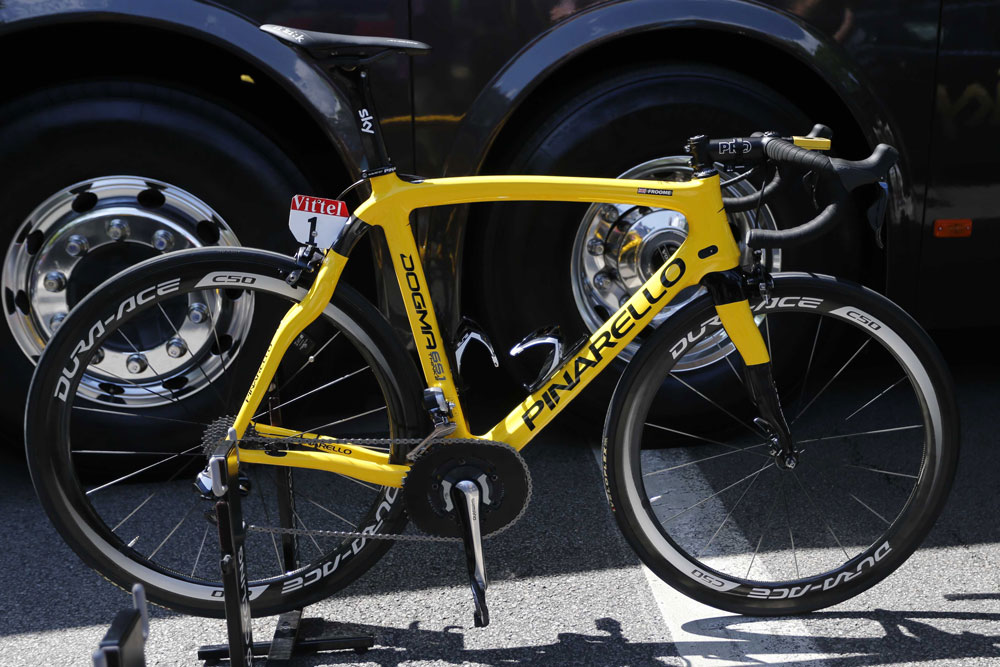
The Dogma model before the F8 was the Dogma 65.1 Think 2, and it's that iteration which Froome rode to his first Tour de France victory in 2013.
Its standout features were the asymmetric design and wavy forks, seatstays and chainstays. The 65.1 gained its name from the use of a new carbon fibre material: Torayca high-modulus 65 as opposed to the 60 ton carbon of previous years’ models. According to Pinarello, this helped the bike become lighter, and therefore more reactive, which Froome managed to showcase expertly throughout his stellar ride.
Froome's model was of course fitted with osymetric chainrings, Fizik saddle, and the old-faithful looking SRM data-box of days gone by.
2012: Bradley Wiggins (Team Sky), Pinarello Dogma
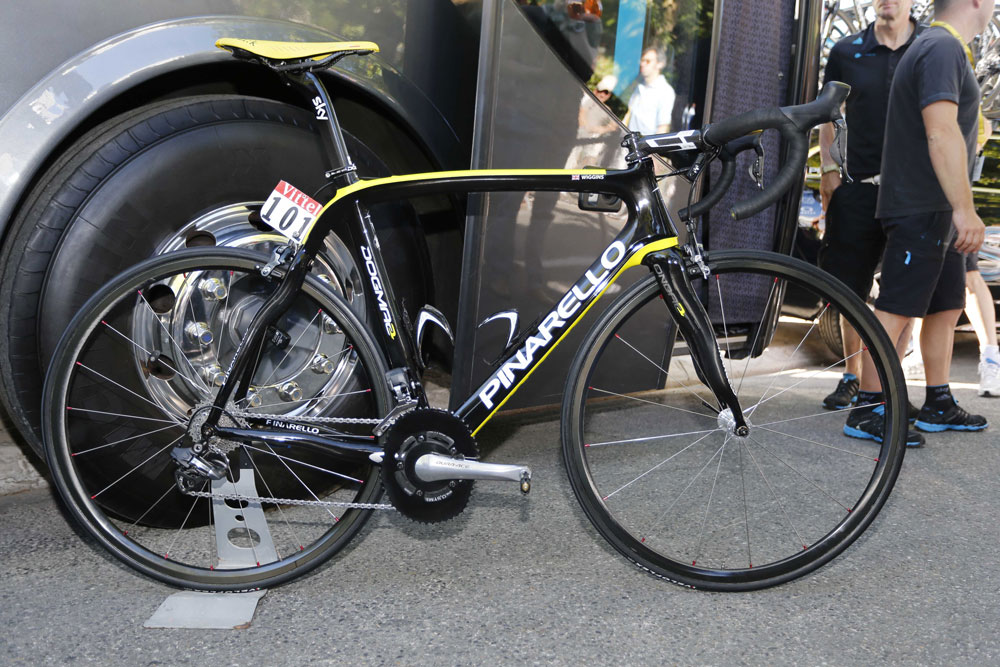
Wiggins rode onto the Champs-Élysées in 2012 on Pinarello's Dogma 65.1, the brand's newest machine, as he secured his maiden Tour de France title. Despite flaunting the sleek bike in Paris that day, Team Sky actually opted for their main rider to stick to the Pinarello Dogma 2 for the rest of the race.
Similarly, Sky ensured Wiggins felt comfortable throughout the three weeks, keeping him on a Shimano Dura-Ace mechanical 10-speed groupset (q for the majority of the time.
Across both the bike he used in Paris and what he used throughout the rest of the Tour, Wiggins also added a Fizik Arione saddle and yet more osymetric chainrings to complete his machine.
2011: Cadel Evans (BMC Racing Team), BMC Team Machine
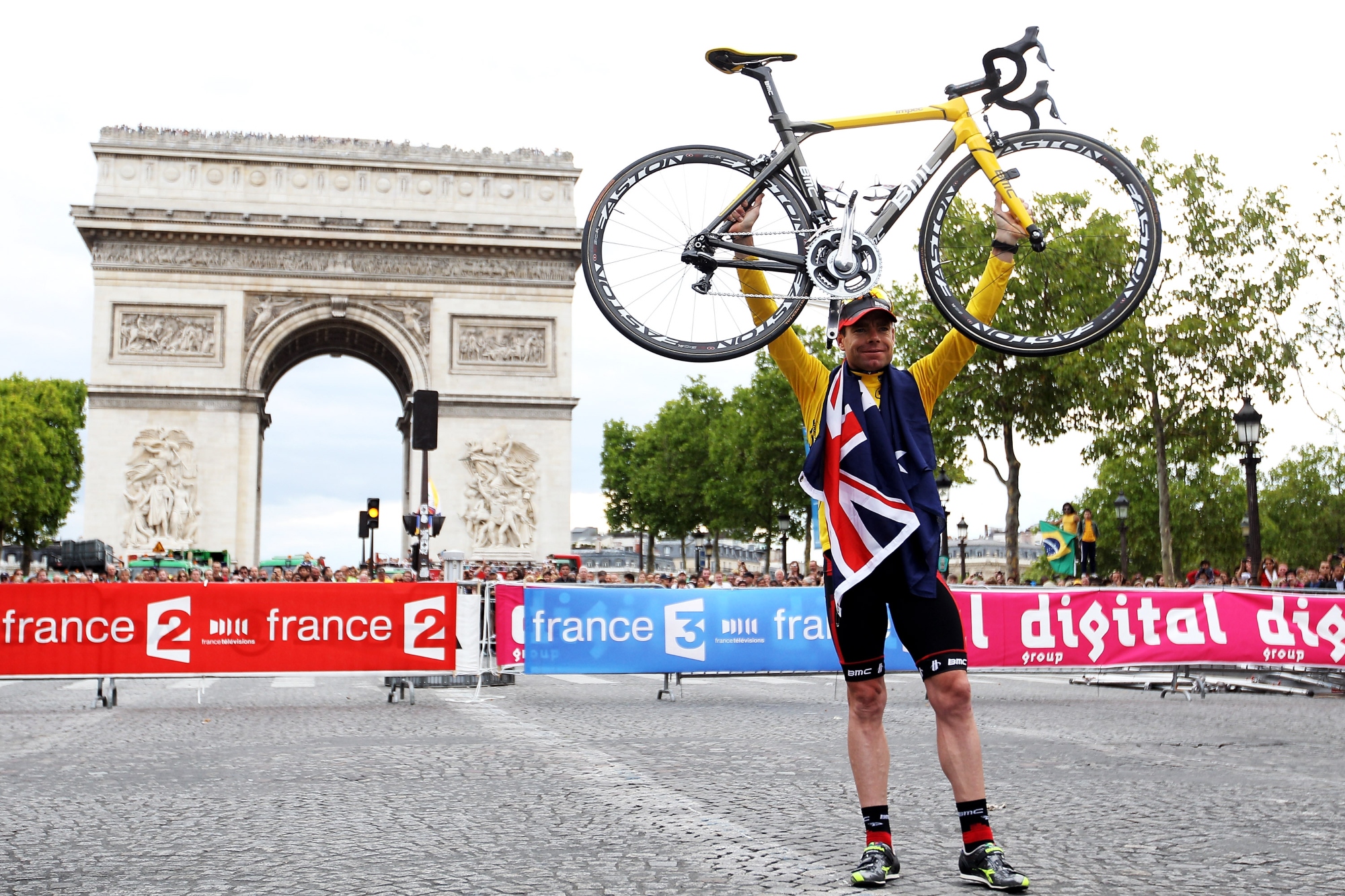
Cadel Evans Tour winning machine
Cadel Evans was the first ever Australian to take the Tour victory 'down under', and he did so aboard his BMC Team Machine. The 2011 Tour de France winning machine was the first bike in history to win the biggest bike race in the world with electronic shifting.
Evans' Team Machine featured a relatively chunky carbon lugged design, that even featured an aero seatpost - something more rarely seen back in the early 2010s. The bike was clad with Shimano's first iteration of Dura-Ace Di2, 7970, and featured an SRM power meter too.
Evans also rode 50mm deep Easton carbon tubular wheels which put together an aero package, that we think, wouldn't look overly out of place today - bar the rim brakes of course!
2010: Andy Schleck (Team Saxo Bank) Specialized S-Works Tarmac SL3
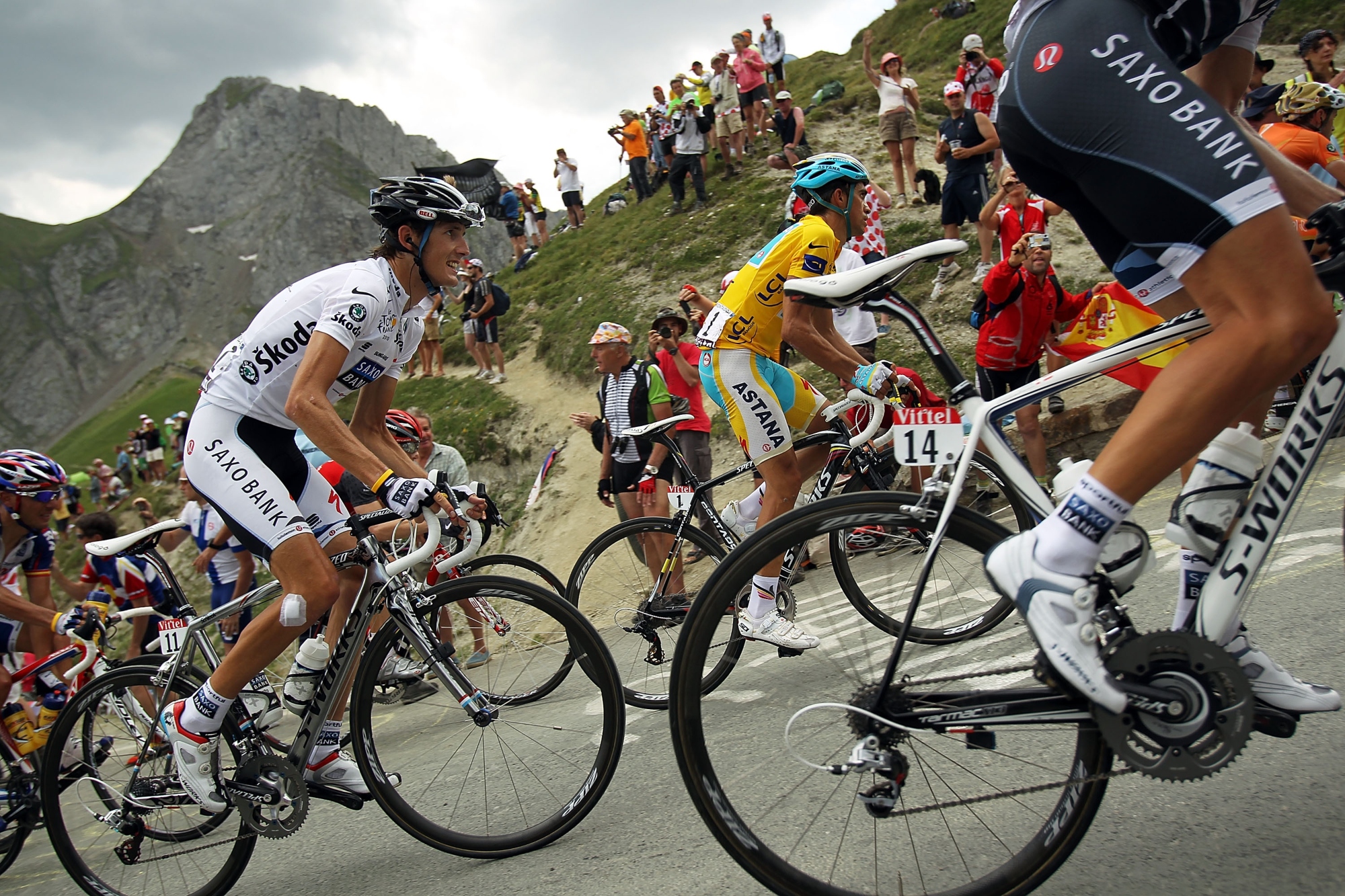
Andy Schleck battling the alpine gradients
Andy Schleck was only officially crowned the 2010 Tour de France champion in early 2012, after the original winner, Alberto Contador, received a doping ban that led to the revoking of his title.
Schleck rode a Specialized S-Works Tarmac SL3, which can be seen above in a dazzling chrome colourway. The eventual winning bike featured mechanical shifting in the form of SRAM Red 10-speed, along with rim brakes.
Carbon wheels were still the order of the day in the form of Zipp's 202 lightweight wheels. Interestingly too, there was no power meter to be seen on the 2010 Tour winner's bike, making Schleck the last winner before power data became more mainstream.
2009: Alberto Contador (Astana) Trek Madone 6.9 Pro
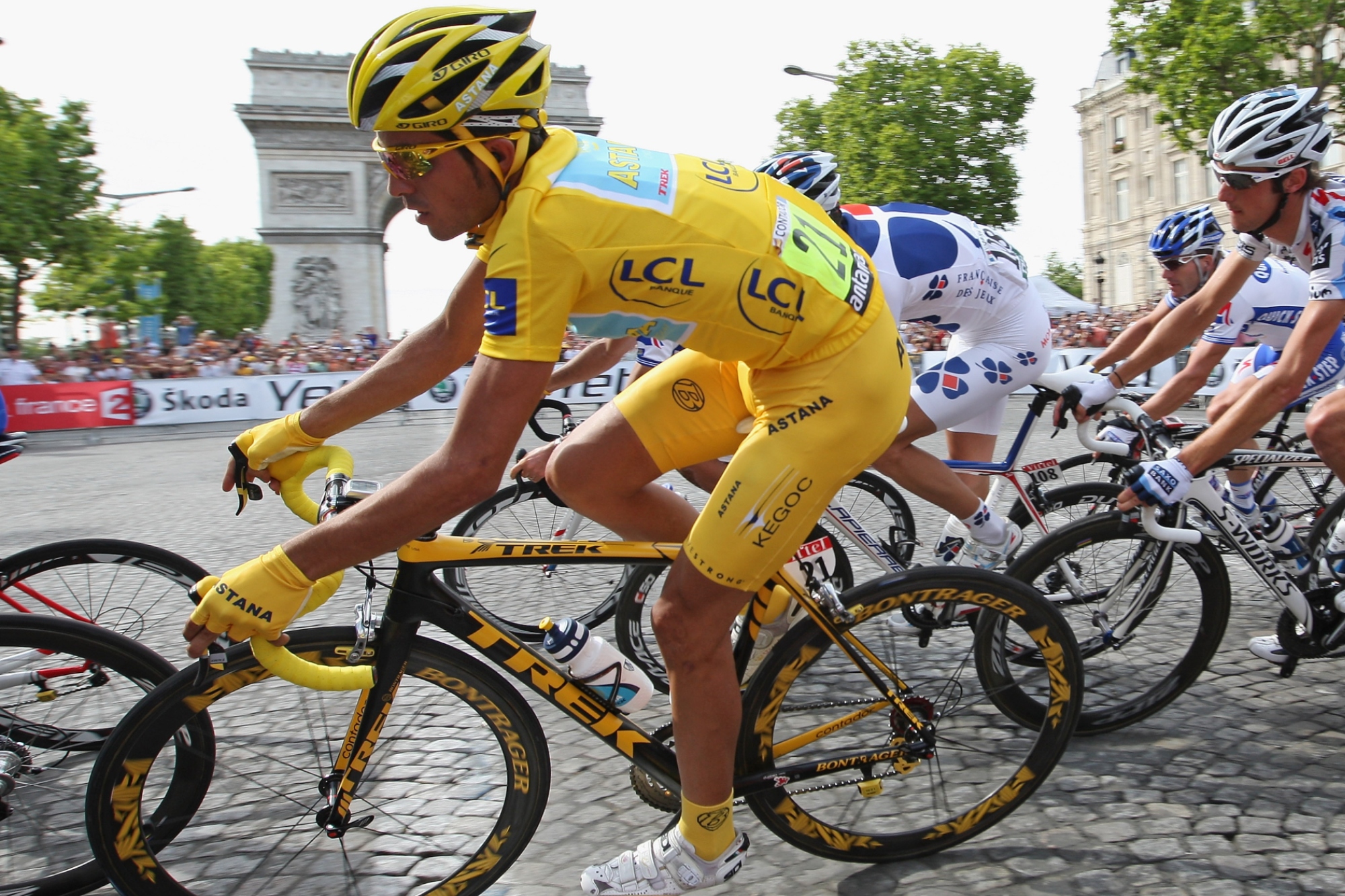
The Spanish climbing legend did retain his 2009 title, this time with a dominant 4m11s winning margin over Andy Schleck. Alberto Contador rolled down the Champs-Élysées on his Trek Madone 6.9 Pro, fully equipped with yellow flashes.
The Madone of 2009 sits in a different postcode to the aero-optimized Trek Madone we know today. The Madone sat as Trek's all-round race bike, with oversized OCLV carbon construction that was influenced by a design ethos based on stiffness and light weight.
'El Pistolero' didn't use a power meter, and used SRAM's 10 speed Red mechanical shifting. Bontrager, Trek's in-house component manufacturer, provided the deep-section carbon wheels and finishing kit to the Spaniard's bike.
2008: Carlos Sastre (Team CSC) Cervelo R5
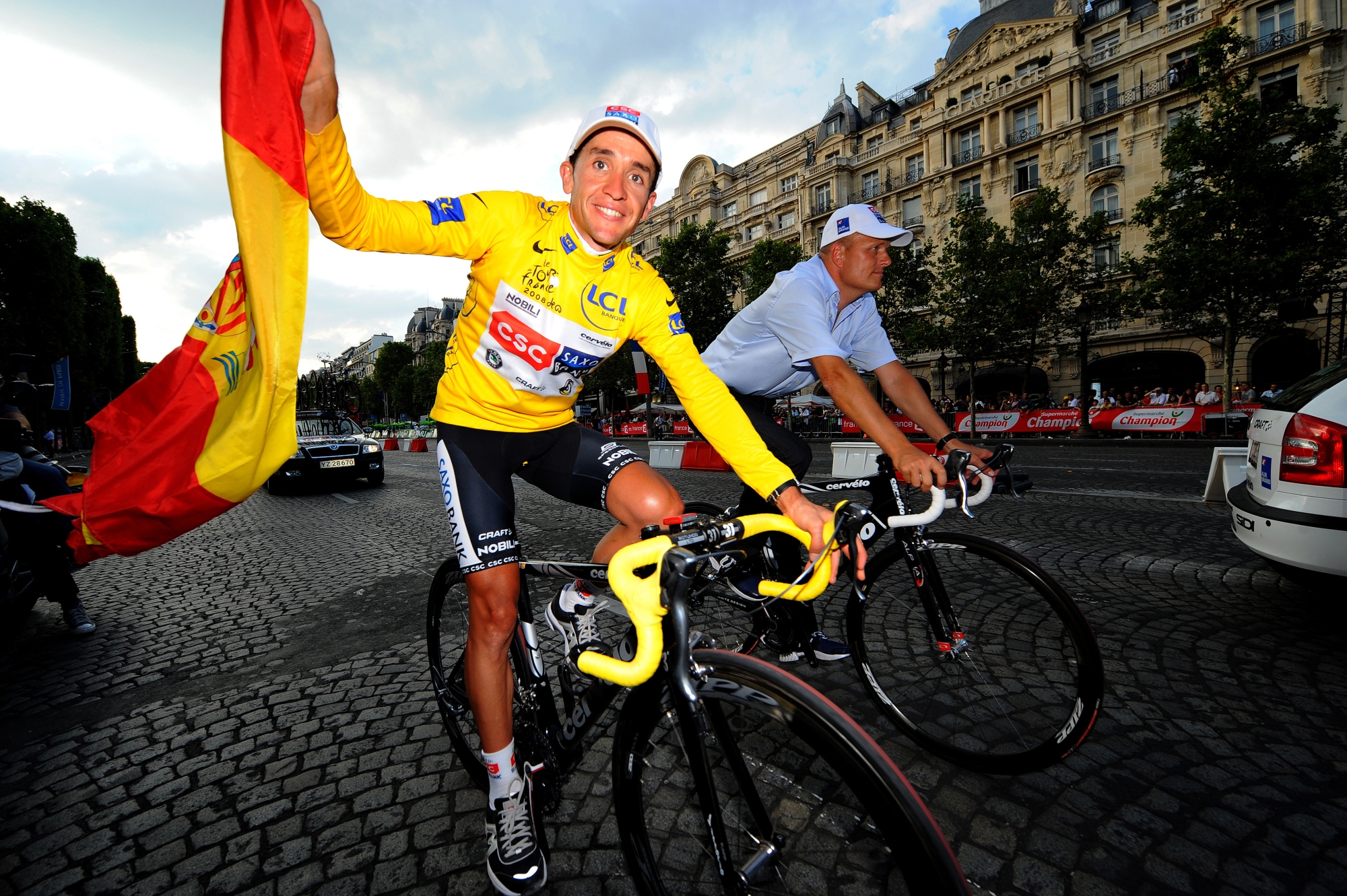
Carlos Sastre post stage 21
We end our dive into the history books with a nice Cervelo-bookend here, with Carlos Sastre winning the Tour 14 years ago aboard the same line of bikes that Jonas Vingegaard used in last year's race.
The two iterations bare more slightly resemblance than the previously discussed Trek Madones, but 14 years of research and development has certainly seen some changes.
Sastro's 2008 winning machine featured Zipp 202 lightweight carbon wheels and Shimano Dura-Ace 7800 ten-speed shifting. 3T, who worked closely with Cervelo through this time provided the finishing kit.
Michelle Arthurs-Brennan the Editor of Cycling Weekly website. An NCTJ qualified traditional journalist by trade, Michelle began her career working for local newspapers. She's worked within the cycling industry since 2012, and joined the Cycling Weekly team in 2017, having previously been Editor at Total Women's Cycling. Prior to welcoming her first daughter in 2022, Michelle raced on the road, track, and in time trials, and still rides as much as she can - albeit a fair proportion indoors, for now.
Michelle is on maternity leave from April 2025 until spring 2026.
- Joe BakerTech Writer
